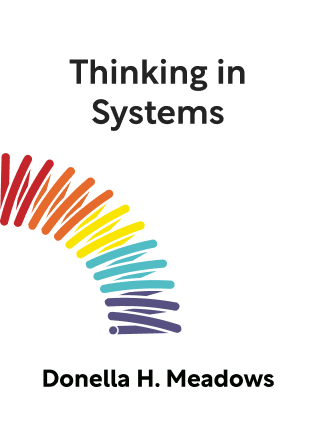

This article is an excerpt from the Shortform summary of "Thinking in Systems" by Donella H. Meadows. Shortform has the world's best summaries of books you should be reading.
Like this article? Sign up for a free trial here .
What is a hierarchy system? How does a hierarchy work and why are they important?
A hierarchy system one where sub-systems are configured under a larger system. A hierarchy can be simple or complex.
Read more about the concept of a hierarchy system.
Defining the Hierarchy System
In a hierarchy system, subsystems are grouped under a larger system. So how does a hierarchy work?
There are many nested layers in the hierarchy of our world. Let’s take you as an example:
- The individual cells that make up your body are highly complex systems in their own right.
- Together, the cells work together as organs, forming the larger system of the human organism.
- You work as part of a larger system of multiple people, such as a family, a company, and your local community.
- These systems of people form larger systems such as cities, states, and nations. And, altogether, these form a worldwide human system.
As systems self-organize and increase their complexity, they tend to generate hierarchies naturally. For example:
- A single business founder has too much work, so she hires support staff and oversees them.
- A single cell developed into multicellular organisms, with each cell having specialized roles within the organism.
Why a Hierarchy System?
The next question is: how does a hierarchy work? In an efficient hierarchy, the subsystems work well more or less independently, while serving the needs of the larger system. The larger system’s role is to coordinate between the subsystems and help the subsystems perform better.
The arrangement of a complex system into a hierarchy system improves efficiency. Each subsystem can take care of itself internally, without needing heavy coordination with other subsystems or the larger system.
This arrangement reduces the information that the subsystem needs to operate, preventing information overload. It also reduces delays and minimizes the need for coordination.
For example:
- Your pancreas senses blood glucose and secretes insulin, without needing to ask your legs or your brain whether it’s ok.
- (Shortform note: In a market economy, people can sell and produce goods on the marketplace, largely without needing to coordinate with other subsystems or authorities. Imagine if, before selling your goods in a yard sale, you needed to contact the central government for permission, contact another bureaucracy for pricing, then contact other households who were also planning yard sales.)
Problems from Ignoring Hierarchy
In a hierarchy system, both the subsystems and the larger system have their role. If either deviates from the role, the system’s performance suffers.
The subsystems work to support the needs of the larger system. If the subsystem optimizes for itself and neglects the larger system, the whole system can fail. For example:
- Individual football players are subsystems within the larger system of the overall team. If a single football player cares more about individual glory and not the victory of the team, he may run plays in a way that causes the team to lose.
- A single cell in a body can turn cancerous, optimizing for its own growth at the expense of the larger human system.
On the other side, the larger system’s role is to help the subsystems work better, and to coordinate work between them. In other words, the larger system is a supporter and an air traffic controller. It should not exercise more control than this, but it often does:
- A company’s workforce may see its management as oppressive and getting in the way of the real work being done.
- A nation with too autocratic a ruler may direct exactly how subsystems should behave and limit self-organization.
A good hierarchy system has balance. There is enough central control to coordinate the subsystems to a larger goal, but not so much control that it suppresses the subsystem’s performance or self-organization.

———End of Preview———
Like what you just read? Read the rest of the world's best summary of Donella H. Meadows's "Thinking in Systems" at Shortform .
Here's what you'll find in our full Thinking in Systems summary :
- How the world, from bathtub faucets to fish populations, can be seen as simple systems
- The key system traps that hold back progress, such as escalating arms races and policy addiction
- Why seeing the world as systems can give you superpowers in work and life






